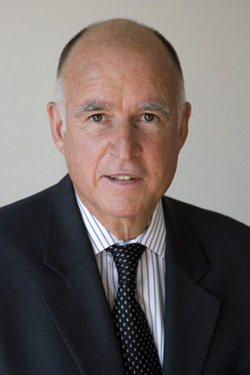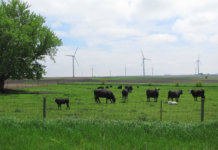 To reduce carbon emissions over the next decade and a half, Gov. Edmund G. Brown Jr., D-Calif., issued an executive order to establish a California greenhouse-gas (GHG) reduction target of 40% below 1990 levels by 2030 – the most aggressive benchmark by any government in North America.
To reduce carbon emissions over the next decade and a half, Gov. Edmund G. Brown Jr., D-Calif., issued an executive order to establish a California greenhouse-gas (GHG) reduction target of 40% below 1990 levels by 2030 – the most aggressive benchmark by any government in North America.
According to the Governor's office, the executive order aligns California's GHG reduction targets with those of leading international governments ahead of the United Nations Climate Change Conference in Paris later this year. The 28-nation European Union, for instance, set the same target for 2030 last October.
California is on track to meet or exceed the current target of reducing GHG emissions to 1990 levels by 2020, as established in the California Global Warming Solutions Act of 2006 (A.B.32).
California's new emission reduction target will make it possible to reach the ultimate goal of reducing emissions 80% under 1990 levels by 2050. This is in line with the scientifically established levels needed in the U.S. to limit global warming below 2 degrees Celsius, which is the warming threshold at which scientists say there will likely be major climate disruptions, such as super droughts and rising sea levels.
‘With this order, California sets a very high bar for itself and other states and nations, but it's one that must be reached – for this generation and generations to come,’ Brown says.
The executive order also specifically addresses the need for climate adaptation and directs state government to do the following:
- Incorporate climate change impacts into the state's five-year infrastructure plan;
- Update the Safeguarding California Plan – the state climate adaption strategy – to identify how climate change will affect California infrastructure and industry and what actions the state can take to reduce the risks posed by climate change;
- Factor climate change into state agencies' planning and investment decisions; and
- Implement measures under existing agency and departmental authority to reduce GHG emissions.
Earlier this year, Brown urged California to increase its renewable portfolio standard to 50% from 33%;Â reduce petroleum use in cars and trucks by up to 50%; double the efficiency savings from existing buildings and make heating fuels cleaner; reduce the release of methane, black carbon and other potent pollutants across industries; and manage farmland, rangeland, forests and wetlands so they can store carbon.



